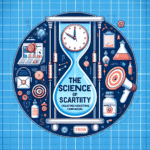
The Ultimate Guide to Flexibility in Content Creation: Feel Free to Mix and Match or Modify Any of These Suggestions to Better Suit Your Article!
Introduction
In today’s fast-paced digital landscape, the ability to create compelling and engaging content is paramount. Writers, marketers, and business owners alike must navigate a sea of creative options to stand out and resonate with their audience. But amid this vast array of possibilities, how do you find the right voice and structure for your content? The answer is simple: feel free to mix and match or modify any of these suggestions to better suit your article! This concept not only empowers creators but also broadens the horizon of what is achievable in content design.
In this ultimate guide, we will delve into the transformative power of flexible content creation. Through compelling case studies, actionable insights, and practical tips, you’ll learn how to navigate the art of content customization. By the end of this article, you’ll have the tools you need to energize your writing and captivate your readers in ways you’ve never imagined.
1. Understanding the Value of Flexibility in Content Creation
Flexibility in content creation isn’t just a trendy buzzword; it’s a crucial element of modern digital marketing and communication. In a world where consumer preferences shift rapidly, sticking to rigid structures can limit the potential impact of your message.
The Changing Landscape of Content Consumption
As per recent studies, about 70% of consumers prefer personalized content. This overwhelming preference underscores the necessity for marketers and writers to adapt their styles and formats. Whether it’s blogs, social media posts, or email newsletters, the ability to feel free to mix and match or modify any of these suggestions to better suit your article allows for increased relativity and engagement.
Case Study: Spotify’s Personalized Playlists
Spotify has mastered the art of personalized content through its music playlists. By analyzing user preferences, they create tailored playlists like "Discover Weekly" that keep users engaged. This approach highlights the effectiveness of personalized content, revealing how flexibility can drive user satisfaction and loyalty.
2. Strategies for Mixing and Matching Content Ideas
Now that we understand the importance of flexibility, let’s explore practical strategies for effectively mixing and matching content ideas.
2.1 Identifying Core Themes
Identifying core themes within your niche allows you to tailor your content more effectively. Create a list of primary topics and subtopics that resonate with your audience. This foundation lets you feel free to mix and match or modify any of these suggestions to better suit your article!
| Core Theme | Subtopics |
|---|---|
| Content Marketing | SEO, Blog Writing, Social Media |
| Health & Wellness | Diet Plans, Exercise, Mental Health |
| Technology | Gadgets, Trends, Reviews |
2.2 Utilizing Templates
Templates are an excellent way to maintain structure while leaving room for creativity. Consider using adaptable formats that allow for easy modification. For instance, a case study template can be tailored to fit anything from a product launch to a social campaign.
2.3 Incorporating Storytelling Techniques
Stories captivate and engage, making them a powerful tool in content creation. To take full advantage of this technique, you can feel free to mix and match or modify any of these suggestions to better suit your article! Create personal anecdotes, customer success stories, or brand journeys that resonate with your audience.
3. Content Formats Worth Exploring
Different content formats can dramatically change the way your message is received. Exploring a variety of formats can keep your audience engaged and broaden your reach.
3.1 Blogs
Blogs are foundational to content marketing. With effective SEO practices, blogs can drive traffic and foster engagement. Opt for varied writing styles—informative, personal, or persuasive—and mix topics to enhance interest.
3.2 Infographics
Visual content is highly shareable. Infographics simplify complex information and are perfect for summarizing data. Pairing infographics with detailed blogs can significantly enhance user experience.
3.3 Videos
Videos have become one of the most engaging mediums. Contrary to popular belief, creating video content doesn’t need to be complicated. Whether it’s a simple tutorial, an interview, or a product review, video can amplify your message.
Case Study: Buzzfeed’s Utilize of Quizzes
Buzzfeed has effectively harnessed quizzes and videos to engage audiences. Their strategy demonstrates that even seemingly unrelated formats can be integrated into a cohesive content plan.
4. Empowering Your Audience Through Customization
One of the primary reasons content fails is a lack of user connection. Allowing your audience to participate in the content creation process can enhance their experience.
4.1 User-Generated Content
Encourage your audience to share their experiences, stories, or opinions related to your core theme. User-generated content not only fosters community but also enriches your brand’s authenticity.
4.2 Feedback Loops
Incorporate feedback systems into your content strategy. Regularly seek your audience’s opinions on topics and formats they find valuable. The insights gathered can significantly help you feel free to mix and match or modify any of these suggestions to better suit your article!
5. Measuring Success in Your Flexible Content Strategy
To ensure your mixed and matched content is successful, it’s essential to track performance metrics. Understanding your audience’s interaction with the content can help you pivot and adapt as necessary.
5.1 Key Performance Indicators (KPIs)
When evaluating your content’s effectiveness, consider the following KPIs:
- Traffic – Measure how many visitors engage with your content.
- Bounce Rate – Analyze how many visitors leave the page without interacting.
- Engagement – Track likes, shares, and comments.
5.2 Analyzing A/B Tests
Conducting A/B tests can provide insight into which content variations resonate more with your audience. For instance, testing different headlines or formats can help you refine your approach over time.
Conclusion
The art of content creation is not confined to a singular approach. By embracing the idea that feel free to mix and match or modify any of these suggestions to better suit your article!, you empower yourself to explore new avenues of creativity and connection.
Through the combination of personalization, varied formats, and effective audience engagement, the possibilities are endless. So go forth and create vibrant, engaging, and impactful content that speaks directly to your audience’s needs.
FAQs
1. What are some effective ways to personalize content?
Experiment with user-generated content, tailor email campaigns, and engage in social media discussions.
2. How can I ensure my content remains relevant?
Regular updates and audience feedback loops are essential for maintaining relevance in your content strategy.
3. What types of content should I focus on?
Consider a mix of blogs, infographics, videos, and social media posts while keeping an eye on audience preferences.
4. How can I measure the effectiveness of my content?
Use performance metrics such as traffic, bounce rates, and engagement levels to evaluate your content’s impact.
5. What if my audience doesn’t engage with my content?
Reassess your strategies. Explore new content formats, run A/B tests, and be open to audience feedback for improvements.
By embracing flexibility in your approach, you allow for a richer interaction and a more effective connection with your audience. So, dive into the mix and create something extraordinary!












